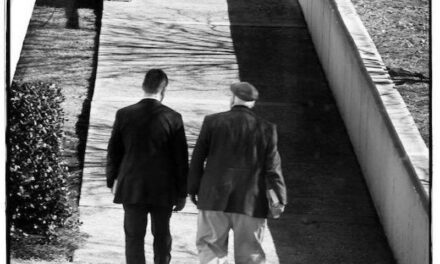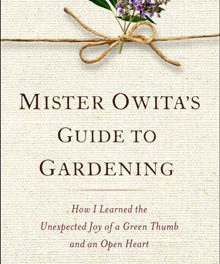 Our own Debbi Covington’s gorgeous new cookbook asks the question “why wait to celebrate?”
Our own Debbi Covington’s gorgeous new cookbook asks the question “why wait to celebrate?”
(Story by Mark Shaffer, Food Photography by Paul Nurnberg)
Debbi Covington’s Everyday Gourmet column has been reason enough to pick up a copy of this publication for nearly a decade. Trust me, there are file folders and loose-leaf notebooks stuffed with pages of Debbi’s recipes in kitchens all over the Lowcountry and beyond. Anyone who’s ever attended an event she’s catered or even a simple social gathering she’s thrown together knows that Debbi is passionate about her craft and damn good at it.
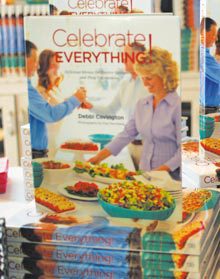 The same goes for Paul Nurnberg. His award-winning photography routinely appears in national ad campaigns and magazines like Southern Accents, People, Coastal Living and Food Arts. When the inspiration struck for Debbi’s second cookbook she knew that photography would be a major factor. She also knew that the food on the page had to be the same food that ended up on the table. Paul’s ability to capture the essence of these recipes with his images is remarkable. Indeed, they are.
The same goes for Paul Nurnberg. His award-winning photography routinely appears in national ad campaigns and magazines like Southern Accents, People, Coastal Living and Food Arts. When the inspiration struck for Debbi’s second cookbook she knew that photography would be a major factor. She also knew that the food on the page had to be the same food that ended up on the table. Paul’s ability to capture the essence of these recipes with his images is remarkable. Indeed, they are.
The end result is Celebrate Everything! Delicious Menus for Festive Gatherings and Easy Entertaining. The book is designed and published by the incomparable Lydia Inglett who specializes in creating books of extraordinary quality for a wide variety of authors, artists, museums and private companies. She designed Lowcountry Weekly for years and her creative touch still lingers.
The book is designed and published by the incomparable Lydia Inglett who specializes in creating books of extraordinary quality for a wide variety of authors, artists, museums and private companies. She designed Lowcountry Weekly for years and her creative touch still lingers.
We all gathered in the Covington kitchen for brunch on the day the first shipment of books were due to arrive. We sat down to a brunch right out of the book (Veggie Frittata, Blueberry Streusel Cornbread) and a conversation made perhaps a bit livelier with a combination of anticipation and Bloody Marys. A week later the three collaborators came together at Nurnberg’s studio in Port Royal for the book’s debut signing party. Befitting the title, it was a celebration to remember.
THE CONVERSATION
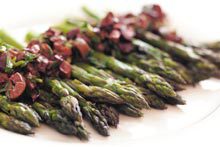 Mark Shaffer: How did this project come together?
Mark Shaffer: How did this project come together?
Debbi Covington: Lydia and I started talking about it a couple of years ago. Then my mom got sick and moved in with us and I had a lot of time to sit at the computer and it started to grow. I wanted photographs and I have a lot of friends who are photographers. My original idea was to have different photographers do the individual chapters. Meanwhile Paul offered to do the whole thing. So, I jumped on it.
Lydia Inglett: Twenty thousand photos later…
(Laughter)
MS: So how many made it into the book?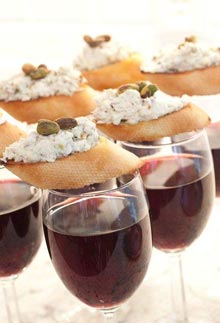
DC: Five hundred and eight.
MS: How many did you shoot – a ballpark estimate?
Paul Nurnberg: Twelve thousand, probably more. We did nineteen different shoots, twenty-seven chapters.
DC: Fourteen with people.
MS: And somehow I managed to miss every one.
DB: I know! You could have been famous!
MS: There goes my shot at cookbook immortality.
PN: I shot more than a thousand pictures for some of the chapters, so in the end it’s probably closer to fifteen.
MS: Even without the expense of burning through film that’s still a lot of shots.
DC: Paul’s a perfectionist.
PN: It’s has to do with different angles and giving the designer choices – vertical, horizontal, squares, big, small – lots of variety. How many recipes are there?
 DC: A hundred eighty two recipes, but some have other recipes within them.
DC: A hundred eighty two recipes, but some have other recipes within them.
PN: And then there are the people shots and all the little details.
LI: What Paul did was keep it from being static and repetitive. That loses people. It’s about establishing a pace and flow and if you don’t have variety you can’t get there.
MS: There is a definite flow to the book. As the designer you take Debbi’s text and Paul’s images and create this. Is this a collaborative vision or do you have a specific idea of where you want to go?
LI: Yes and yes. You have to start somewhere, so you look at the content. It’s a combination of factors – photo size, how many photos, and how’s the copy going. All of this has to work into what amounts to an economic equation – how much is going to fit into a certain number of pages?
pages?
PN: In other words, “how big is the book?”
DC: We did increase the size.
MS: This is a big book.
LI: It’s a big book for a great value. You have to make an entertaining stroll for the reader. They have to find enjoyment in the images and then those things have to work together to keep the reader moving.
MS: There are a lot of smaller photos in strips that add to the movement.
LI: That’s a design motif that runs through the book. It’s either a series of “how to” shots or people photos.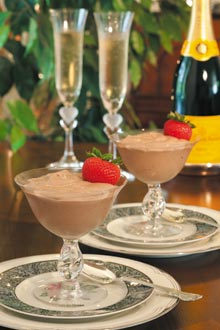
MS: That works for someone like me who needs to see something done in order to do it.
PN: Like the Preserved Lemons (page 70). Just by reading that I might not have gotten it, but the pictures show every step.
MS: Were the three of you here for all of the shoots?
DC: Lydia was here for a couple of things and the front cover.
PN: She’s on the front cover.
LI: I try not to heavily art direct unless people need it and these people did not need it. I really prefer to see what develops particularly with people who know their subject and are passionate about it.
MS: And the whole process seems like it was a lot of fun.
DC: Personally, I had a blast.
PN: I did, too.
DC: On the days we shot I’d get up early and cook and Paul would get here at some point and find 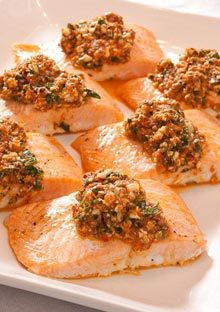 me covered in flour or something.
me covered in flour or something.
(Laughter)
If people were coming I’d have to run and change clothes, do my hair and put on some jewelry.
MS: These were like little dinner parties.
DC: Right. We’d shoot some of the food, then the people would come and we’d give them a drink and say, “Loosen up. You’re about to have your picture made.”
(Laughter)
I’d have a script with all the recipes and I’d cook from that script. I was actually testing the recipes again and I’d tweak them in the process. So every recipe in the book has been tested by me for the picture, which is a nice thing to be able to do.
LI: And it’s important to point out that the food in the photos is real. It’s not retouched.
PN: It’s all real, as it was cooked. Everything’s edible and as it should be.
DC: No fake ice cubes, no shellac, no tricks.
LI: On-the-spot real.
MS: Food photography is an art form all its own and shooting real food without the usual tricks and making it look this good is a challenge.
PN: It’s lighting and angles – the right light on the food to make it look good and picking different angles because not everything comes out perfect. I’m thinking the flan?
 DC: I dropped the flan. So in the book there’s a beautiful side shot of the flan because the rest of it’s (makes a raspberry sound).
DC: I dropped the flan. So in the book there’s a beautiful side shot of the flan because the rest of it’s (makes a raspberry sound).
(Laughter)
Paul’s also really good with the action shots like the Parmesan cheese as its grated, falling on the cauliflower.
PN: And one of the challenges is doing twenty-seven different meals in one house and making them look different. That was a huge challenge because everything was shot here.
DC: In three rooms and some outside.
MS: Leafing through the book there’s no real sense of that.
PN: Debbi was always asking if we’d used something. Did we use these plates or tablecloth or silver?
DC: Luckily I’m a junkie for dishes – every color imaginable. I’ve got about 20 sets of silver and every type of glass you can think of. And the book gave me a great excuse to buy more. So I did.
(Laughter)
PN: We were also fortunate that you changed your living room furniture during the shoot. That helped.
(Laughter)
MS: You started in August and wrapped around Thanksgiving. What happened after that?
DC: We were kind of like “I miss you. When are we going to do another one?”
(Laughter)
MS: Now you’ve got to put it all together and wade through fifteen thousand photos.
PN: I’d make a gallery of the hundreds that I thought would make good verticals, horizontals, close-ups, distance shots and whatever. Debbi would go through and narrow them down.
DC: It was a learning process. In the beginning we’d send Lydia forty shots when we needed eight.
MS: Were you writing over the course of the shoots?
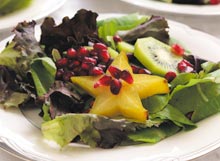 DC: Sort of writing as we shot, but once Lydia sent me an idea of how the book was going to look, then I knew what I needed. It really is like the Lowcountry Weekly format. Every chapter has a little blurb at the top, then the recipes and each recipe has a bit of text about it. I collect cookbooks. My office is full of them, but I don’t read all the stuff. I just want the recipes and want to see what they look like.
DC: Sort of writing as we shot, but once Lydia sent me an idea of how the book was going to look, then I knew what I needed. It really is like the Lowcountry Weekly format. Every chapter has a little blurb at the top, then the recipes and each recipe has a bit of text about it. I collect cookbooks. My office is full of them, but I don’t read all the stuff. I just want the recipes and want to see what they look like.
MS: What inspired the concept of Celebrate Everything!
DC: It’s kind of weird. I saw a magazine article about pets and how pets don’t wait for special occasions to be happy. When you come home, that’s a celebration. I lost both of my parents over the last two years and they missed out on so much because they worked all the time. And I thought, life’s too short. And the whole thing came together.
There’s a chapter that celebrates sunshine, another for steak night. Everything’s a reason.
LI: And the beauty of it is that you can plan a celebration out of the book – a whole themed event or you can pick a single recipe and make it for the family on a Tuesday night.
DC: And everything’s easy. The most complicated thing in the book is the Thai Salad and that’s only because it has so many components.
MS: The book really is a thing of beauty, almost a coffee table book. But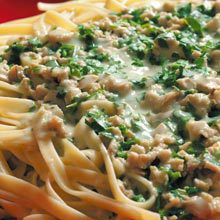 leafing through it, with the way the recipes and photos flow, the colors on the page, the clean lines and text – it’s like you’ve created a new genre: the action cookbook.
leafing through it, with the way the recipes and photos flow, the colors on the page, the clean lines and text – it’s like you’ve created a new genre: the action cookbook.
(Laughter)
LI: I like it!
DC: Yeah, so do I.
LI: Well, what we try to do is really catch the vision of the project and the personality of the people involved. And that’s the challenge, as well: how do you turn words and images into a product that people can hold in their hands and enjoy and use?
DC: That’s a great point. When it came to laying out the book there were things we all wanted to do in different ways. So, it’s important to work with people who can deal with that kind of give and take.
LI: It’s a really complicated, detailed process.
DC. It is. For my last book, I sent my stuff to the cookbook company, saw the pictures they did, they sent me a copy and that was it. This was so much more involved.
PN: It was a lot more involved than I thought it was going to be.
(Laughter)
MS: Photographically speaking, how labor intensive was this?
PN: Absolutely the single most labor-intensive project I’ve done. But Debbi and I got along great.
DC: And Paul got to eat really well and take home bags and bags of food.
PN: I did.
MS: And that’s the ugly truth of making a cookbook…
(Laughter)
PN: (Pats belly) My cookbook baby’s right here!
(Laughter)
DC: We like to call it “book weight.”
MS: Any thoughts on doing another one?
DC: I definitely want to do another book and would love to have Paul shoot it if he’ll stick with me.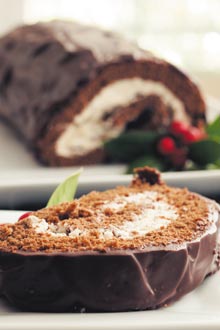
PN: Absolutely.
MS: That’s a wrap.
PN: But wait. I’ve hardly talked.
(Laughter)
GET MORE:
Celebrate Everything! is available at local bookstores and online. Watch for upcoming signings in support of a number of regional non-profit organizations.
Catering by Debbi Covington
843.525.0350
www.cateringbydebbicovington.com
Nurnberg Photography
912.429.0189
Lydia Inglett Ltd.
843.217.4683



